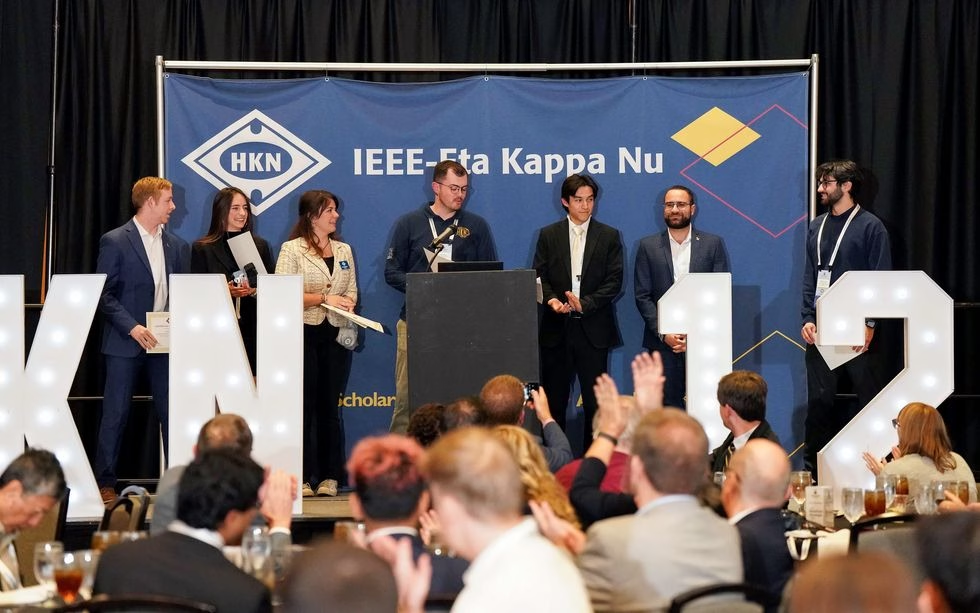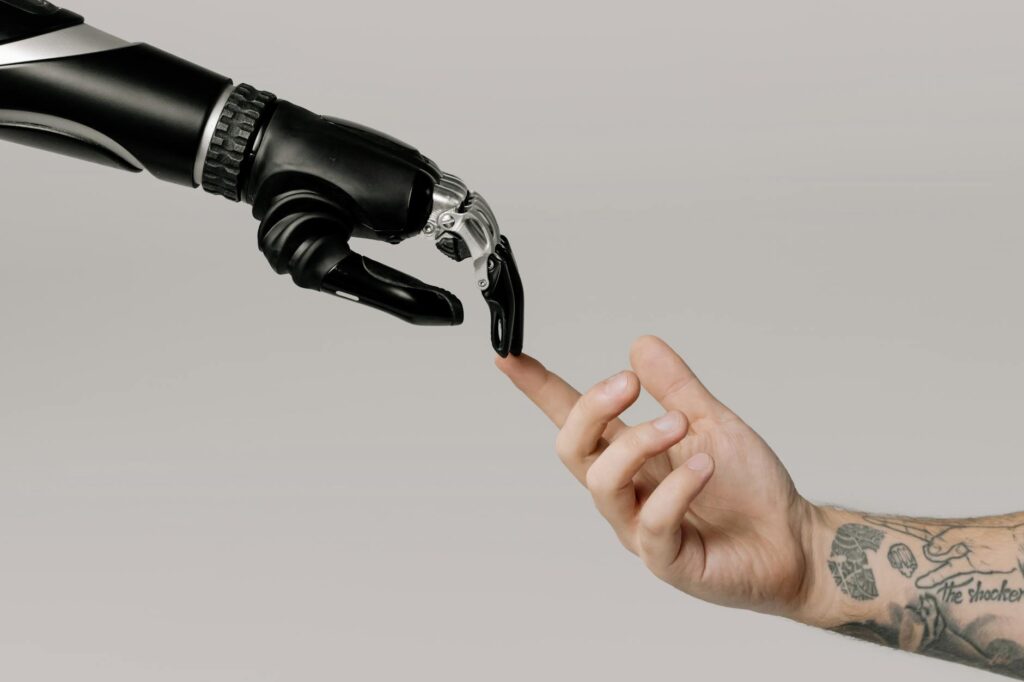How Vulcan Materials paved its way to digital success

Technology tamfitronics
Technology tamfitronics Company-first CIO Krzysztof Soltan and his team helped transform the construction-aggregates giant with a focus on digitizing operations, modernizing infrastructure, and overhauling how IT goes about its business.
In a recent “all-hands” meeting, Krzysztof Soltan, CIO of Vulcan Materials, announced his IT organization would continue its “laser focus on digital transformation.”
Digital technology, he explained, would remain a central focus of the construction-aggregates industry and would underpin customer-grade experiences increasingly expected from industry leaders. Vulcan, based in Birmingham, Ala., is the nation’s largest construction aggregates company, producing materials such as crushed stone, sand, and gravel, with strategic downstream assets like asphalt and ready-mixed in select markets. Soltan, previously a tech leader at Johnson Controls, ABB, and GE, became the company’s first CIO just two years ago and is at the forefront of the company’s digital transformation efforts.
Soltan and his fellow leaders attribute Vulcan’s success to many things, but chief among them is the company’s attitude toward key activities like operating and selling — “The Vulcan Way,” as it is widely referred to within the company. This orienting force has become so strong that, to Soltan and his team, it seemed only right that they should rethink IT in terms of how it might amplify the approach. As Soltan explains: “If we were going to keep up with the pace of change in the industry, IT would have to be recalibrated.”
Here, Soltan and his IT leadership team share the story behind those efforts. They highlight the mindset and approach necessary to leverage new technologies to best compete in the digital age.
Technology tamfitronics Tailwinds of transformation
As Soltan’s IT leadership team explains, Vulcan’s digital transformation turned a corner with the advent of the Vulcan Way of Selling, an enterprise-wide initiative that, through technology, aimed to turn the company’s highly manual relationship-based sales model on its head. And so it did.
Since the initiative’s launch in 2017, Vulcan has deployed myriad proprietary technology solutions that serve up real-time market insights, thereby improving experiences for sales reps, customers, and the truckers responsible for transporting goods to job sites. For sales reps, these improvements show up as more time spent talking about solutions with customers, and less time on administrative work like quoting. For customers, real-time location-tracking of materials shipment translates to better labor planning. For truckers, a seamless, paperless experience when picking up materials at a Vulcan quarry means faster delivery.
As Vulcan SVP Jerry Perkins put it at the company’s 2022 investor day, “Time is money in the construction and trucking industry, and these tools make our truckers and customers much more efficient and productive.”
The success of the Vulcan Way of Selling brought the company to an inflection point. Enterprise-wide, tech-enabled transformation programs would no longer be one-off events; instead, they were destined to become fixtures in Vulcan’s pursuit for continuous improvement.
Enter Soltan. After learning the business and getting acclimated with the effort to integrate US Concrete, which the company had recently acquired, Soltan got to work charting IT’s path forward. “Between the US Concrete acquisition and other major initiatives, we hadn’t taken a step back in awhile to reflect on how we were managing our own shop,” Soltan says, noting this isn’t unusual for companies during periods of growth.
The path to cementing Vulcan IT’s value proposition, says Soltan, would be two-fold: Invest continuously in enabling business-driven initiatives, and modernize how they manage the business of IT.
Technology tamfitronics Enabling business-driven initiatives
As just one example, the company has commenced VulcanX, an initiative that extends the Vulcan Way of Selling by providing best-in-class tools to the company’s Sales teams to help them win more business and deliver better experiences to customers, in the form of seamless and secure interactions. These efficiencies, the company hopes, will drive more quotes and, subsequently, higher quote-to-order conversions, all while allowing the team to spend less time on administrative tasks.
Just as important is the technical foundation on which Vulcan operates its plants. And so the company has launched another initiative in partnership with its business units to modernize the organization’s technical infrastructure, including improving the speed, connectivity, and mobility of its networks in service of Vulcan’s 10,000+ employees — qualities that will become only more vital as the company multiplies its digital capabilities.
“One reality of our business is that we have to enable modern day technology in the rugged, remote locations that are home to our plants and quarries,” says Soltan. “VulcanX enables scale and mobility in the plant with cloud-based solutions, and our modernized networks will improve our ability to capture data and to quickly drive insights for the folks running our operations.”
Vulcan’s employees can leverage digital capabilities in the field only to the extent that the company’s IT and OT systems are integrated. This reality — understood by Vulcan’s business unit leaders as well as anyone — has ultimately stood to justify, incentivize, and propel the company’s transformation.
Technology tamfitronics Managing the business of IT
A great deal of Vulcan’s success in managing the business of IT can be traced back to the department’s operating model. “The capabilities you deliver within IT the roles and responsibilities, and the ways of working — getting these things right — creates a solid foundation for execution,” Soltan says. To Vulcan’s leaders, it made sense, then, that the operating model should be among the first things they strove to modernize.
First, there was talent strategy — how the company would recruit and train. Of particular concern was the department’s IT career paths, which stood to be refreshed. As Soltan recalls, “We needed our paths to be more indicative of the work we’re doing. This not only helps us attract new talent but allows our team to feel confident they are adding modern skills to their toolkits.”
To this end, Vulcan leaders did two things. First, they developed a new set of career paths, including specific tracks for product management, DevOps, Data Engineering, and other sets of skills that, as Vulcan advances, will become indispensable. Second, the leaders expanded its talent pool by opening a second hub in Dallas, home to Vulcan’s US Concrete acquisition, and the fourth largest metropolitan area in the United States.
The second facet concerned projects, which experienced high demand. As Soltan explains, when digitally transforming at the pace Vulcan has, “priorities change daily, and without rigorous governance processes, it’s nearly impossible to have visibility into your IT investment portfolio.”
To rein in demand, and ensure resources were allocated impactfully, Vulcan formalized its IT Project Management Office (PMO). “The goal is to manage IT like a business,” says Soltan. “That means being clear about investment criteria for IT projects and establishing expectations for project execution that allow us to monitor value capture.”
For Vulcan, each new project introduces new applications and integration patterns into the technical estate. To ensure these can be properly absorbed, Vulcan also invested in maturing its enterprise architecture muscle. “Standards around technologies, integration patterns, and security are becoming more important,” says Soltan.
“Architecture ensures that new solutions do not render old ones redundant and that we construct things in a manner conducive to easily capturing and integrating data,” he explains, noting this will only become more important as IT/OT convergence accelerates to enable capabilities such as predictive maintenance in the plants.
Technology tamfitronics Rip the band-aid
For CIOs in similar sectors just starting out on digital journeys, the prospect can be unsettling, especially in light of recent technological changes — the AI craze, the pace at which IT and OT are converging — not to mention the list of demands from the business. And still, as Soltan says, one thing is certain: Technology will increasingly enable you to compete and differentiate yourself.
So if your company is like Vulcan Materials, if it has climbed to great heights despite preceding the dawn of digital, Soltan suggests you get started: “Your business leaders are smart. They know the importance of technology and of modernizing IT to compete. They have your back. So look honestly at where you are, rip off the band-aid, and start moving, piece by piece, towards your future state.”
Technology tamfitronics Related content
MicroStrategy boosts HyperIntelligence with artificial intelligence
MicroStrategy has added a chat interface to its HyperIntelligence system to deliver context-sensitive business information through natural language queries.
By Maneesha Tiwari
Jun 28, 20244 mins
Generative AIBusiness Intelligence
Marine Corps enlists RPA, 5G, and AR/VR to retool fighting force
The Marine Depot Maintenance Command launched a massive digital transformation to improve maintenance and repair operations, better equip the Corps for now and the future, and save millions of dollars.
By Grant Gross
Jun 28, 20247 mins
CIO 100MilitaryAugmented Reality
The STA is realizing potential in predictive analysis and automation
AI finding patterns in incident data, predicting where incidents will occur, and automating the lifecycle management of servers are just some of the things Swedish Transport Administration IT director Niclas Lamberg is focusing on to deliver ROI.
By Karin Lindstrm
Jun 28, 20245 mins
CIOTransportation and Logistics IndustryIT Training
Systems-level approach drives optimal performance and power efficiency for Linux and open-source workloads
Drive optimal performance and power efficiency for Linux and open-source workloads with a systems-level approach.
By Kristin Burnham
Jun 27, 20244 mins
Digital TransformationInnovationCloud Computing
SUBSCRIBE TO OUR NEWSLETTER
From our editors straight to your inbox
Get started by entering your email address below.
Discover more from Tamfis Nigeria Lmited
Subscribe to get the latest posts sent to your email.



 Hot Deals
Hot Deals Shopfinish
Shopfinish Shop
Shop Appliances
Appliances Babies & Kids
Babies & Kids Best Selling
Best Selling Books
Books Consumer Electronics
Consumer Electronics Furniture
Furniture Home & Kitchen
Home & Kitchen Jewelry
Jewelry Luxury & Beauty
Luxury & Beauty Shoes
Shoes Training & Certifications
Training & Certifications Wears & Clothings
Wears & Clothings
















